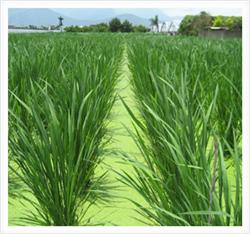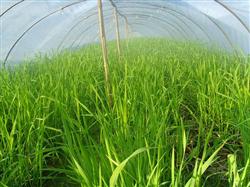Zizania latifolia has excellent culture quality and high yield.

In recent years, Zizania caduciflora and other aquatic vegetables have developed rapidly. Some idle beaches, shallow ponds, especially some low-lying fields have been planted with Zizania caduciflora, and planting Zizania latifolia has become a good way to increase farmers' income. However, most Zizania caduciflora farmers do not attach importance to management, especially after harvest. The reasonable winter-managed Zizania caduciflora field has the advantages of light diseases and insect pests, neat emergence, more tillers, sturdy seedling body, few gray and male plants, and high yield and high quality Zizania caduciflora. After the harvest of Zizania caduciflora, the gray and male Zizania latifolia plants in the field should be dug up in time, the old leaves of the remnant plants should be cut off from the pier of Zizania latifolia, and the old leaves should be stacked and burned together. In this way, the base number of overwintering diseases and insects can be reduced, and the buds cut in the mud are neat, and the new seedlings grow in the second year are stout. After the harvest of Zizania caduciflora, the plant gradually enters the dormant period, and the nutrients of the aboveground part are gradually transferred to the underground rhizome. At this time, it is necessary to supply enough oxygen to the soil to promote the growth of the underground rhizome and the winter buds on the stem. Therefore, after harvesting, dry water should be released to dry the field, and water should be rehydrated after fine cracks appear on the surface of the field. Rewatering is carried out before the frost, generally keeping the water level 2-3 cm. After December, the water level can be deepened to 7-10 cm, to protect the underground rhizome safely through the winter. At the beginning of March of the following year, the weather cleared up and the water level dropped to 2-3 cm. Scientific fertilization between Greater Cold and the Beginning of Spring, 4000 kg of mature human and animal manure per mu to ensure that the fleshy stem quality is good, not hard. The application of base fertilizer should not be later than the beginning of March. After the beginning of spring, when the height of Zizania caduciflora seedlings is about 20 cm, combined with ploughing and weeding, urea 25kg / mu or ammonium bicarbonate 40kg / mu is applied to promote the germination of new buds. At the end of winter and the beginning of spring, the seedlings on Zizania caduciflora sprouted neatly and checked for missing seedlings as early as possible. Where the pier is missing, the new seedlings should be cut and made up; if there are too many germinated seedlings on the old Zizania caduciflora pier, some of the small and weak seedlings should be removed, and the strong seedlings with uniform growth should be selected.
- Prev

Planting techniques of Pleurotus ostreatus
Planting techniques of Pleurotus ostreatus
- Next

Cultivation techniques of Zizania latifolia in greenhouse
1.1 The varieties of Zizania latifolia L. were selected from Zhejiang Zizania latifolia L. No. 2, which was suitable for local planting. This variety was introduced from Zhejiang University in 1995. After many years of domestication and breeding by agricultural technology department, it has become a main variety widely planted in Yuyao City. Zhejiao 2 is about 2m high, 3.5~4.5cm wide, strong tillering,...
Related
- Where is it suitable to grow horseradish in China? it is expected to see the middle altitude horseradish in Alishan.
- How to prevent tomato virus disease reasonably? (Control methods included)
- Many people like to plant towel gourd on the balcony. What are the main points of this method and management?
- What crops can chili peppers be mixed with?
- Fertilization techniques and matters needing attention in Tomato
- What are the grafting techniques for peach seedlings in spring?
- Harm and control methods of root swelling disease of Chinese cabbage
- What are the pests of sweet potatoes? How to prevent and cure it?
- Symptoms, causes and Control methods of navel Rot in Tomato
- The cause of "Cucumber rotten bibcock" in Farmers' planting Cucumber and its Control Plan

